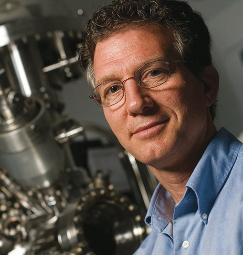Lehigh’s already-renowned capabilities in the science of surface analysis have received an exciting boost, thanks to the acquisition of two critical new instruments.
With support from NSF, Lehigh will be home to a high-sensitivity low energy ion scattering (HS-LEIS) spectrometer – a first in global academia, as well as a first anywhere in the U.S. A method of characterizing a material’s chemistry and structure, HS-LEIS involves directing a stream of charged particles (ions) at a surface and determining the outer-most atomic layer composition (~0.2-0.3 nm).
Bruce Koel, professor of chemistry and interim vice provost for research, and Israel E. Wachs, the G. Whitney Snyder Professor of chemical engineering, coordinated the NSF proposal effort.
“This instrument represents a significant step forward for research at Lehigh,” Koel says. “Its unique sensitivity to surface composition will benefit researchers from a wide variety of disciplines across Lehigh’s science and engineering landscape.” HS-LEIS complements Lehigh’s Scienta ESCA 300 – another analysis instrument found only at Lehigh.
“Lehigh researchers who require precise characterization of surfaces and interfaces can now push the limits further than ever before,” says Wachs, citing existing Lehigh interests in nanocatalysis, fuel cells, optical and bio-sensors, functional glasses, biomaterials, polymers, ceramics, semiconductors, metal alloys, coatings, adhesives, and membranes, as benefitting from HS-LEIS.
Koel also recently installed, using funds from NSF, NASA, and Lehigh, a versatile surface analysis instrument containing a scanning tunneling microscope (STM). The new STM can be used to observe atoms and molecules on solid surfaces in vacuum and ambient environments, and complements Lehigh’s aberration-corrected transmission electron microscopes (TEM). Says Koel: “Simply put, Lehigh is home to an amazing array of nanoscale characterization instruments.”

